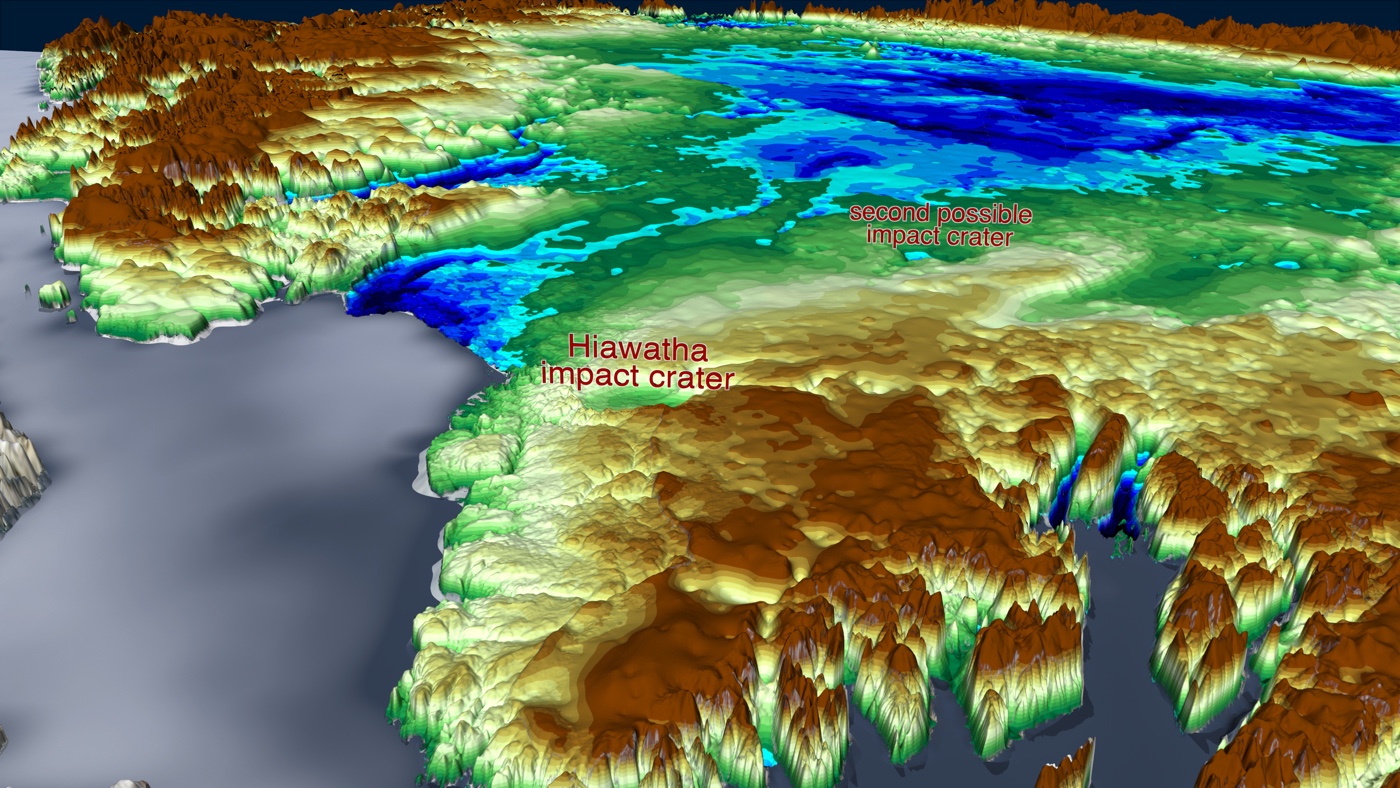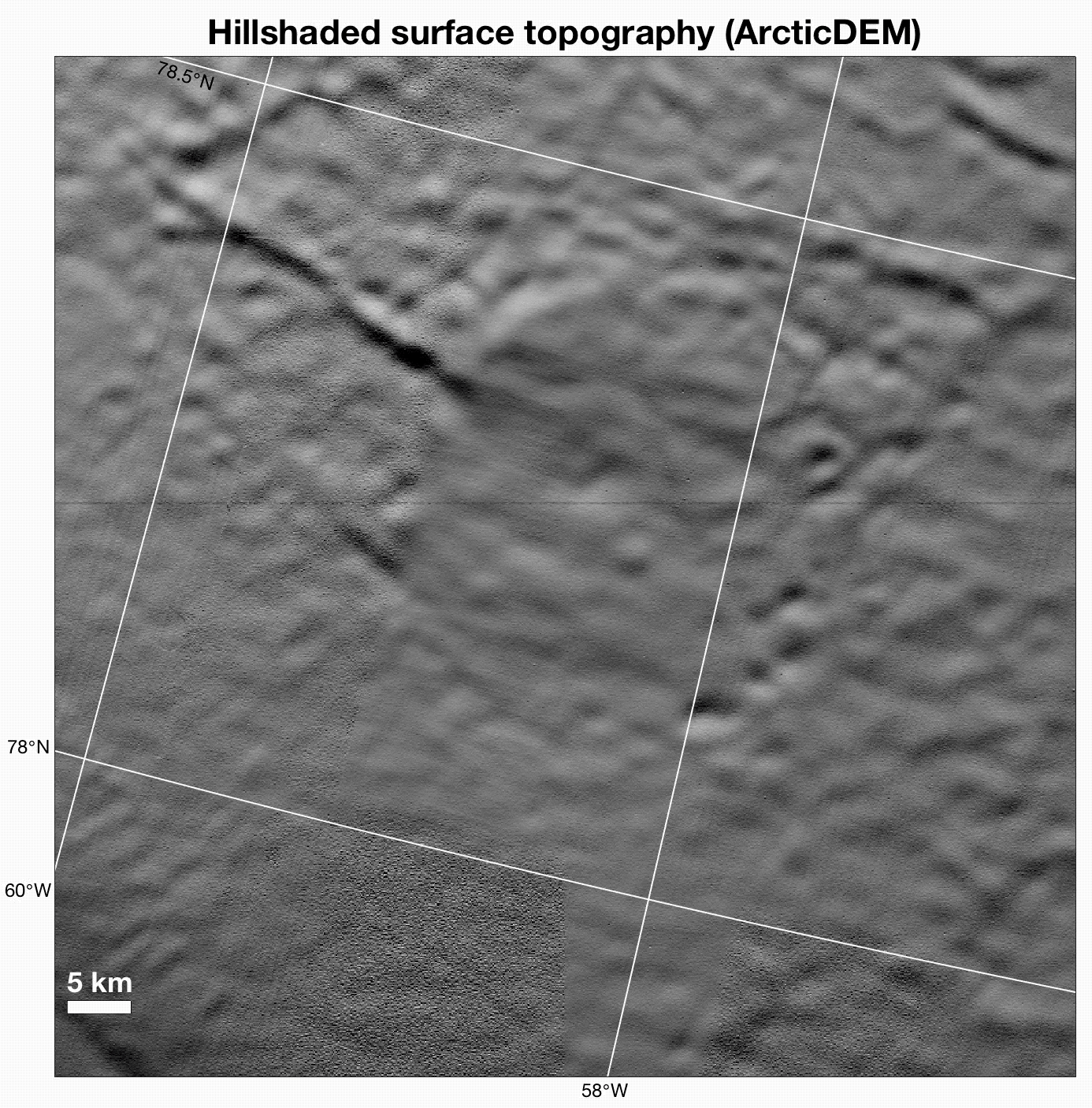Huge Meteor Left Crater Hidden Beneath Greenland Ice

Editor's Note: This story was updated at 9:55 a.m. E.T. on Thursday, Feb. 14
Lurking below more than a mile of ice in Greenland is a circular depression that was very likely left by an ancient impact with a space rock.
The meteor impact crater, reported Feb. 11 in the journal Geophysical Research Letters, is only the second ever discovered in Greenland. It's just 113 miles (183 kilometers) from the other crater in the country, which scientists reported last year.
Joseph MacGregor, a glaciologist at NASA's Goddard Space Flight Center, was on the team that discovered the first crater, dubbed Hiawatha. In late 2016, when most of the work identifying the Hiawatha crater was done though the research was yet to be published, MacGregor was already on the hunt for another crater. He found one faster than he expected. [Images: Greenland's Gorgeous Glaciers]
"I was like, 'Really, could there actually be another?'" MacGregor told Live Science. "I sort of stood up from my desk and paced the hallways a little bit."
A new crater
The new crater is about 22 miles (36 km) across, which makes it the 22nd-largest impact crater ever discovered on Earth and a wee bit bigger than the Hiawatha crater, which measures 19 miles (31 km) across. Hiawatha sits under about a half-mile (930 meters) of ice, while the new crater is buried under 1.2 miles (2 km). Both craters are in northwest Greenland, and scientists have a disproportionate amount of information on this remote, icy region simply because many of their research flights originate at the nearby Thule Air Base. [Photos: Top-Secret, Cold War-Era Military Base in Greenland]

To find the craters, the research team combined satellite imagery of the Greenland ice sheet and radar-sounding data collected by aircraft. With the radar data, scientists can "see" through the ice using radar waves that hit the bedrock below and bounce back. Most of the data came courtesy of NASA's Terra and Aqua satellites and the space agency's IceBridge aerial survey program; all of that data is publicly available.
Sign up for the Live Science daily newsletter now
Get the world’s most fascinating discoveries delivered straight to your inbox.
"Anyone could have found this," MacGregor said. In fact, some amateur enthusiasts did. After the Hiawatha paper was published in November 2018, some members of the public contacted MacGregor to draw his attention to the second crater, he said, not knowing he'd found it before the Hiawatha crater paper went out.
Crater questions
The age of the new crater is hard to gauge, MacGregor said. The oldest ice layer dated above the depression is about 79,000 years old, but ice flows, so that doesn't necessarily mean much. Using depth-to-width ratios of impact craters allowed the team to estimate the crater's age by its erosion rate — but only very roughly. The researchers peg it at between 100 million and 100,000 years old. Hiawatha is probably younger, MacGregor said. [Photos: Craters Hidden Beneath the Greenland Ice Sheet]
Scientists are fairly certain the new crater really is from an impact. The only other explanation for the newfound depression is that it's a volcanic caldera, MacGregor said, but volcanic rocks create magnetic anomalies that just aren't present in the new feature.
Though it was surprising to find the first known pair of Greenland impact craters so close to one another, a sample size of two is too small to alter the understanding of how many Arctic impacts there were or how fast craters erode, MacGregor said. Most likely, Hiawatha and the new crater are the "largest-slash-easiest ones that there are to find," he said. Any additional craters will probably be much smaller and harder to detect.
Answering questions about the craters' age and formation won't be easy, he added.
"You have to drill through 2 kilometers [1.2 miles] of ice, and then, depending exactly what element of the crater's history you're interested in, you might have to drill through 100 or 200 m [330 to 670 feet] worth of rock," MacGregor said. He added that all the equipment would have to be hauled more than 100 miles (160 km) inland across the ice. "That's a technological challenge."
Editor's Note: This story was corrected to note that the new crater is slightly bigger, not slightly smaller, than Hiawatha crater.
- In Photos: The Impact Craters of North America
- Image: Greenland's Dramatic Landscape
- Images: Northeast Greenland's Retreating Glaciers
Originally published on Live Science.

Stephanie Pappas is a contributing writer for Live Science, covering topics ranging from geoscience to archaeology to the human brain and behavior. She was previously a senior writer for Live Science but is now a freelancer based in Denver, Colorado, and regularly contributes to Scientific American and The Monitor, the monthly magazine of the American Psychological Association. Stephanie received a bachelor's degree in psychology from the University of South Carolina and a graduate certificate in science communication from the University of California, Santa Cruz.









